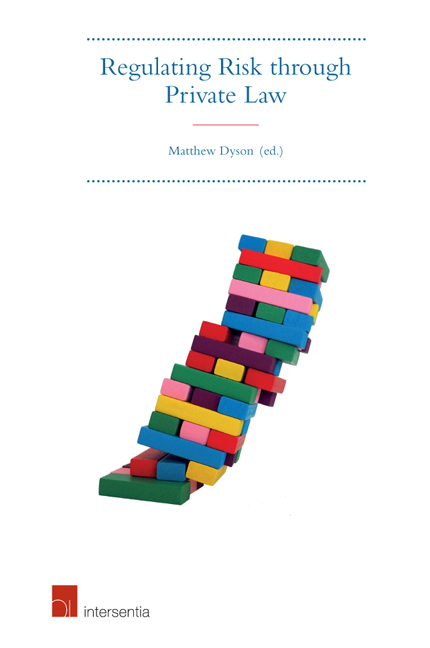Book contents
- Frontmatter
- Preface
- Contents
- Table of Cases
- List of Contributors
- Chapter 1 Introduction
- Part I Risk Overviews
- Chapter 2 Risk and english tort law
- Chapter 3 Risk and French Private Law
- Chapter 4 Risk in Swedish Tort Law: Of Models and Muddles
- Chapter 5 Risk and Italian Private Law
- Chapter 6 Regulating Risk Through Private Law: The Spanish Approach
- Chapter 7 How Dutch Tort Law Responds to Risks
- Chapter 8 Risk and Chilean Private Law
- Chapter 9 Regulating Risk Through Private Law: South Africa
- Chapter 10 Risk and Brazilian Private Law
- Part II State of the national art on risk
- Index
- About the Editor
Chapter 10 - Risk and Brazilian Private Law
from Part I - Risk Overviews
Published online by Cambridge University Press: 13 October 2018
- Frontmatter
- Preface
- Contents
- Table of Cases
- List of Contributors
- Chapter 1 Introduction
- Part I Risk Overviews
- Chapter 2 Risk and english tort law
- Chapter 3 Risk and French Private Law
- Chapter 4 Risk in Swedish Tort Law: Of Models and Muddles
- Chapter 5 Risk and Italian Private Law
- Chapter 6 Regulating Risk Through Private Law: The Spanish Approach
- Chapter 7 How Dutch Tort Law Responds to Risks
- Chapter 8 Risk and Chilean Private Law
- Chapter 9 Regulating Risk Through Private Law: South Africa
- Chapter 10 Risk and Brazilian Private Law
- Part II State of the national art on risk
- Index
- About the Editor
Summary
INTRODUCTION
The concept of risk is embedded in Brazilian law. The term ‘risk’ has acquired multiple meanings and has found its way into several fields of law, with varying degrees of acceptance. Scholars and professionals normally mention risk when trying to reduce it. This is the case, for instance, in contract law. Risk is also a main subject in tort law and plays a key role in the summa divisio of tort liability: fault-based liability and strict liability. Fault is the foundation for ‘subjective’ liability (along with abuse of rights); 1 risk is usually the foundation for strict liability. Each form of liability is autonomous with regard to the other and in no sense is ‘subjective ’ liability hierarchically superior to, or thought to be more important than, strict liability in Brazil. Rather, each of these types has its own scope of regulation, clearly defined by law, meaning that parties may not choose when fault-based liability or strict liability is applied. Thus, the two regimes complement one another through the application of general clauses. Unlike some other countries, the use of general clauses is a hallmark of Brazilian law on risk and complicates regulating risk in a given activity, as discussed in the Brazilian chapter in Part II (Ch. 19).
However, the concept of risk is not confined to generic hypotheses enshrined in contract law or tort law. Every country has particular problems related to risk that require specific legal solutions formulated within the general framework of that jurisdiction, and has its own starting points, usually not explicit in legislation, case law or legal doctrines. Analysing risk in Brazilian law reveals interesting features of the country's legal culture, for example the way in which Brazilian scholarship has developed doctrines regarding risk distribution, or how legislative techniques were adopted to provide timely answers to riskrelated problems, particularly those that were and are more sensitive due to the socio-economic conditions in twentieth- and twenty-first-century Brazil.
In this chapter, the analysis of the concept of risk is divided into three parts in sections 10.2 – 10.4. The first part is a survey of risk definitions in key Brazilian legislation and classification of risk by scholars.
- Type
- Chapter
- Information
- Regulating Risk through Private Law , pp. 253 - 282Publisher: IntersentiaPrint publication year: 2018



